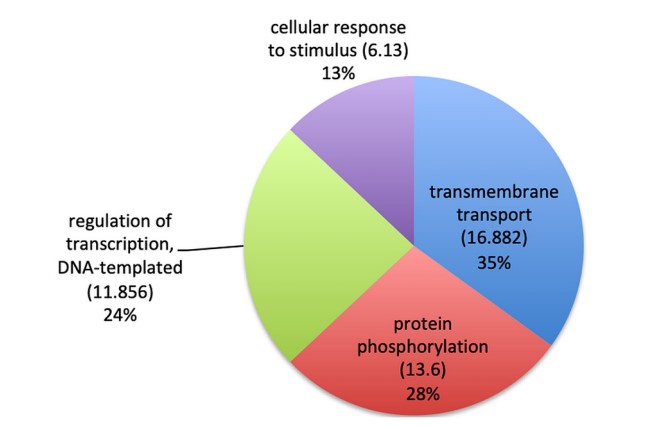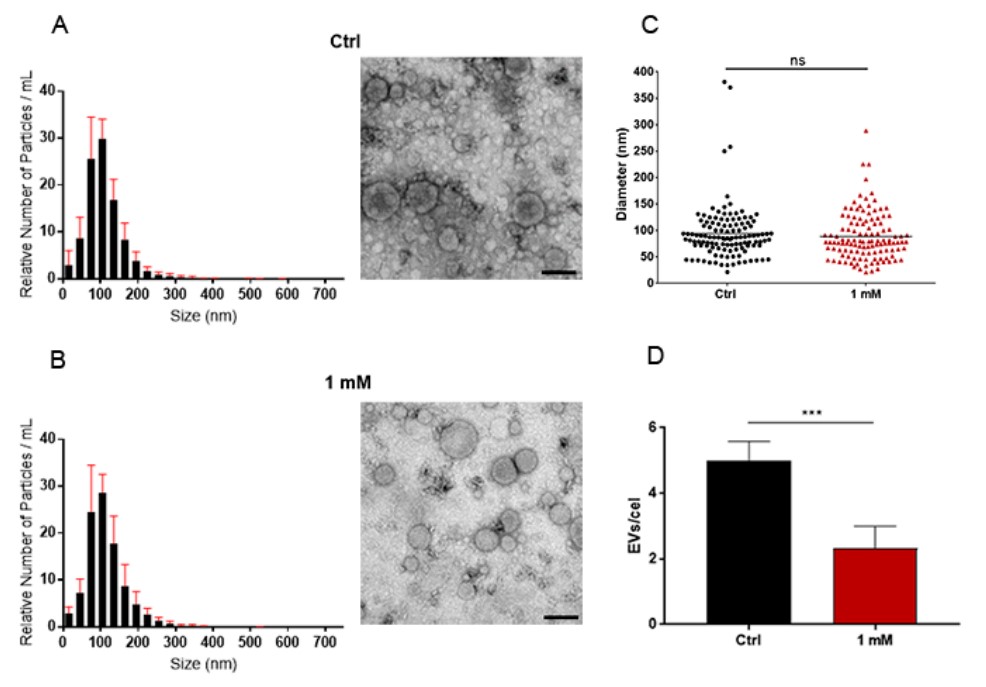|
Research
|
Conclusion
|
|
Histoplasma capsulatum-derived exosomes contained strain-specific content of RNA.
|
Full-length transcript characterization of exosomal RNAs from two different Histoplasma capsulatum strains detected a total of 124 mRNA sequences, showing significant differences in mRNA composition between the two strains. Gene ontology analysis revealed that 93 transcripts enriched in one strain were involved in transport, redox processes, translation, and phosphorylation, while 31 enriched in another strain were involved in cellular, metabolic, and bioregulatory processes.
|
|
Detection of short mRNAs and miRNAs in Histoplasma capsulatum-derived exosomes.
|
It was found that nearly half of the short-read RNAs of Histoplasma capsulatum-derived exosomes were involved in the translation of proteins of unknown processes, followed by those related to DNA metabolism/biogenesis, and also those related to other processes such as protein modification, signal transduction, and lipid metabolism.
Notably, translation-associated RNAs were just found to be highly enriched in one strain, while RNAs associated with translational stress proteins were just found in the other strain. Moreover, prediction of secondary structure based on RNA sequencing data confirmed the presence of miRNAs as well.
|
|
Profiling of ncRNAs and proteins in Histoplasma capsulatum-derived exosomes.
|
The majority of the ncRNA classes in Histoplasma capsulatum-derived exosomes were identified as tRNAs by the ncRNA database, and proteomic analyses revealed the presence of proteins involved in RNA metabolism, such as Nrd1, ribosomal proteins, and argonaute protein QDE2, in Histoplasma capsulatum-derived exosomes.
|
|
Comparison of parental RNA and Histoplasma capsulatum-derived exosomal RNA.
|
The correlation between transcripts highly expressed in the parent fungus and their presence in Histoplasma capsulatum-derived exosomes was found to be low, and transcripts grouped based on biological processes varied greatly. This suggests the existence of mechanisms in fungi that direct RNA to their exosomes.
|
|
Histoplasma capsulatum-derived exosomes were assayed to carry chitinase activity.
|
Fluorometric measurement of chitinase activity revealed that Histoplasma capsulatum-derived exosomes hydrolyzed the chitinase substrate, which was counteracted by methylxanthines in a dose-dependent manner.
|
|
Effect of chitinase inhibition on Histoplasma capsulatum-derived exosome release.
|
Transmission electron microscopy observations and NTA assays revealed that the amount of exosome released from the methylxanthines-treated Histoplasma capsulatum group was significantly reduced compared to the control group.
Growth curve results showed that this methylxanthines treatment, which inhibited chitinase, suppressed the proliferation of Histoplasma capsulatum.
Proteomic analysis revealed that methylxanthine treatment did not reduce the protein load of the Histoplasma capsulatum-derived exosome, confirming that the inhibition of chitinase activity was not caused by a reduction in protein cargo.
|
|
Chitinase inhibition diminished Histoplasma capsulatum-derived exosome-mediated fungal pathogenicity.
|
Histoplasma capsulatum-infected G. mellonella larvae were used as models to determine the role of chitinase, which showed that treatment to inhibit chitinase rescued larvae from death. Moreover, co-injection of Histoplasma capsulatum and its exosomes further increased the mortality of larvae compared to larvae infected only with Histoplasma capsulatum.
|

 Fig. 1 Gene ontology analysis of Histoplasma capsulatum-derived exosomes.1
Fig. 1 Gene ontology analysis of Histoplasma capsulatum-derived exosomes.1
 Fig. 2 Inhibition of chitinase significantly reduced the release of Histoplasma capsulatum-derived exosomes.2
Fig. 2 Inhibition of chitinase significantly reduced the release of Histoplasma capsulatum-derived exosomes.2









